Painting and Editions
Curated by Claudia De Grandi
10th – 21st September 2019
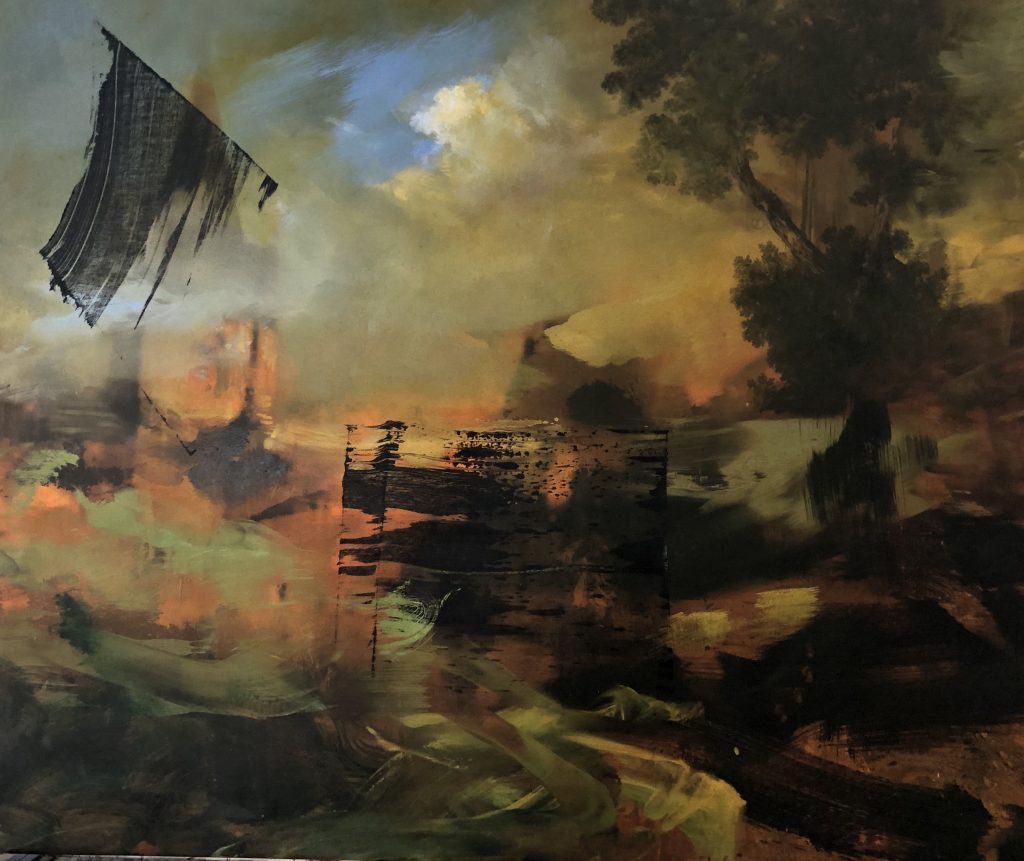
©Alan Rankle
Bermondsey Project Space is pleased to present a new collection of works by Alan Rankle following on from his critically acclaimed exhibition Pastoral Collateral of two years ago. Mothland :Paintings & Editions curated by Claudia De Grandi.
In these recent paintings, works on paper and videos Rankle continues and develops his major themes of relating the idealized tradition of Sublime Romantic landscape art to the increasingly fragmented, clearly insanely broken relationship of our global societies to the natural environment.
Pictures in the exhibition are from three series, Pastoral Collateral where the artist reflects on his roots growing up in the Northern landscape amid the detrius of the Industrial Revolution; the Castle Paintings created initially for Capture the Castle an historical survey exhibition at Southampton City Art Gallery, where he montaged images of bombed out ruins in Syria to provide the backdrop to elegantly depicted, picturesque views of English castles; and Turner in Hastings an ongoing visual essay considering the artists such as Turner, Whistler, De Wint and the English watercolourists who stayed and worked around Rankle’s adopted town of St. Leonards on Sea.
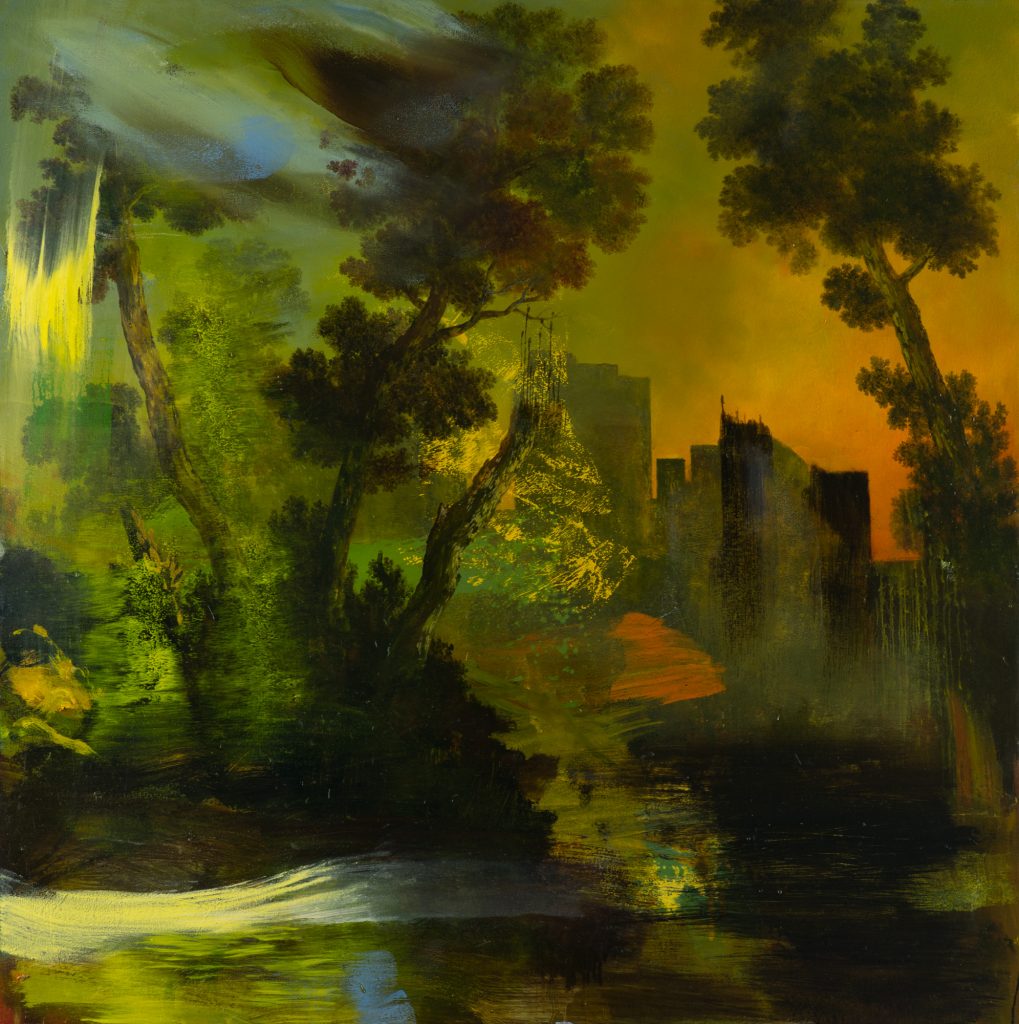
In an interview with Anna McNay about his Pastoral Collateral series the artist stated:
‘I wanted to relate ideas about historical, idealised, pastoral landscape in art to the grim reality of the environmental crisis that we are in, which isn’t just an environmental crisis anymore, it’s a totally impregnated social and political crisis heading towards disaster. Considering the historical origins of the genre in relation to my own paintings, I wanted to convey the irony implicit in how the 19th century Romantic movement, with its emphasis on the idyllic natural world of an imaginary past, was sponsored by people who, having made gigantic fortunes out of the Industrial Revolution by building their empires on the slave trade and the criminal use of the Enclosures Acts forcing the poor from their traditional peasant homes to work in their factories and mills, also laid the foundations of environmental pollution on a catastrophic scale’.
Turner and other artists were commissioned by the barons of the Industrial Revolution to take the Grand Tour and pick up ideas from artists such as Claude Lorrain, Titian, Dughet and Poussin, who were themselves employed to evoke the fantasy of a golden age, a sort of Narnia in Ancient Greece and Rome, where people talked to animals and fucked gods.
While you can’t look at any period of history without seeing similar scenarios, where the art is created for the tyrants and oppressors, this dichotomy of the landscape of Romance is particularly and acutely about the subject that I’ve been interested and involved in. It’s impossible to work in landscape art without it being a political act, and I thought let’s put this right up front. So that’s the title.’
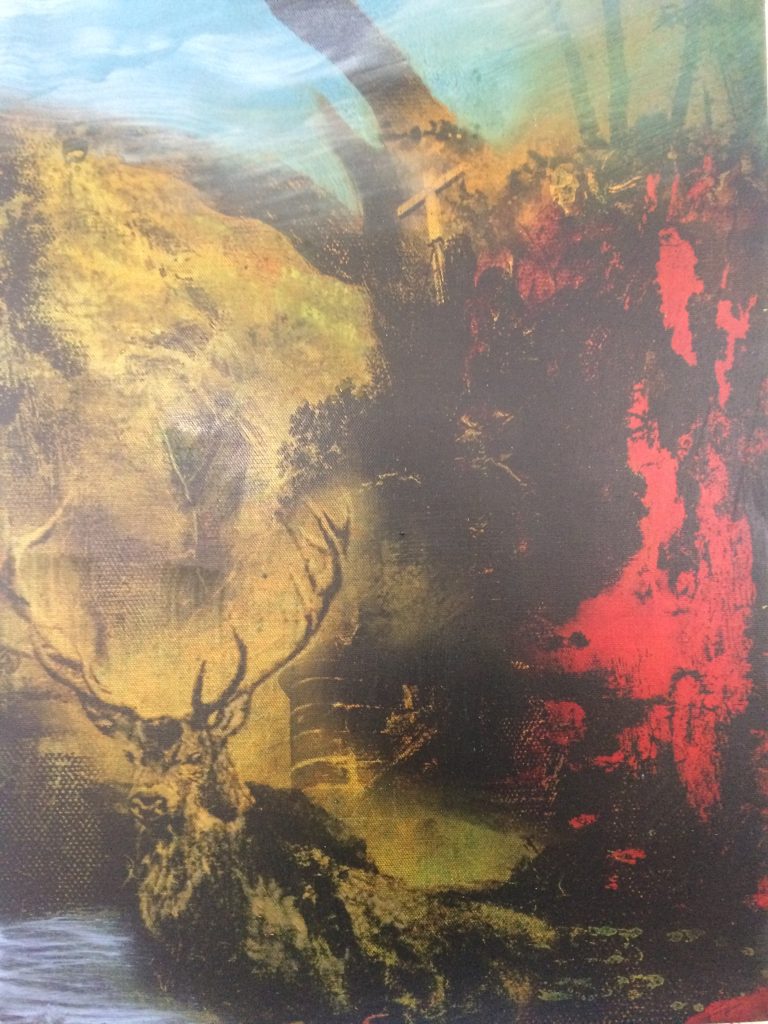
Alan Rankle’s ongoing Castle Paintings series was recognized in Southampton City Art Gallery’s Capture the Castle exhibition, which featured artists from Turner and Wilson to contemporaries such as Christopher Le Brun and Norman Ackroyd. In her essay for the accompanying book, Judy Parkinson writes of Rankle’s work:
‘Castles summon up the stuff of fairy tales, fortifications and fabrications, standing tall in their designated aims to be both offensive and defensive at the same time. `they are symbols of power from where raids are launched and they exist as secure depositories of stratagems and secrets. `the word ‘castle’ comes from the Latin castellum, a diminutive of castrum meaning ‘fortified place’. `the word entered the English language, with somewhat unfortunate timing for the English, just before the Norman Conquest.
Untitled Painting XXIII (Lindisfarne) 2017 embodies themes of border control and religious bans both of which galvanise us today, and Rankle alludes to these contemporary fears in this work. Lindisfarne Castle rises out of Holy Island in the North Sea close to where England and Scotland meet. In 635 St Aidan founded a monastery on Holy Island and it would remain a holy site through Viking invasions and the Norman Conquest. In the mid-sixteenth century the English, under Henry VII, protected the border against the hated Scots, and when the King took against Catholics the site was fortified using stones from the dismantled priory.
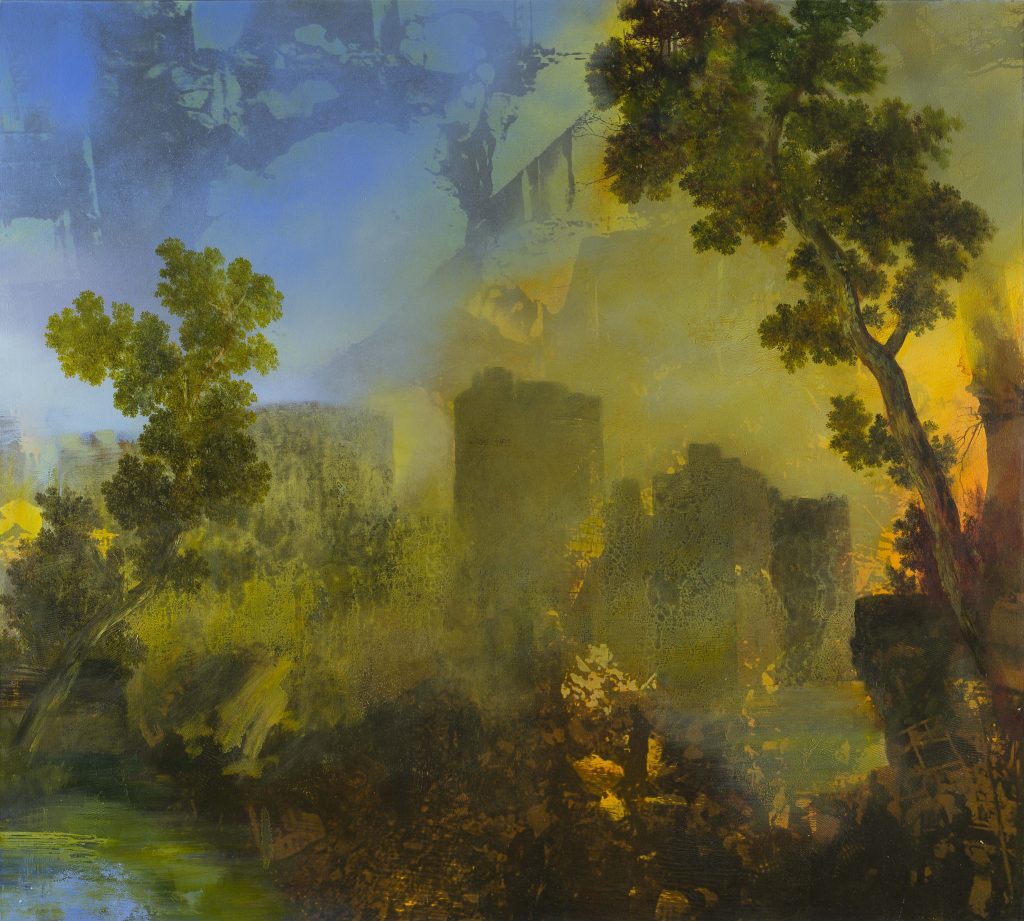
‘These paintings are part of an ongoing series of works about castles and their iconic relevance to modern times,’ states Alan Rankle. ‘I first addressed this theme working in a studio at St Quentin la Tour, a twelfth century maison forte in the region of the Cathars in South West France in 1986. `These recent subjects Bodiam and Lindisfarne were, like many castles, built to dominate what are stunningly beautiful landscapes, which to contemporary observers provide a reassuringly picturesque context to the barbarism enacted within and without their walls.’
Rankle’s other series of works in the exhibition, Turner in Hastings,while clearly acknowledging his debt to the masters of the English Watercolour School, might at first sight appear to be wholly lyrical and celebratory in outlook. On closer inspection these storm wracked cliffs and ominously coloured seas seem to depict a vision of an elemental world imagined before, and by implication possibly after, the brief tenure of mankind in the context of the relentless evolution of the Earth. As the artist puts it ‘The flurry of Romanticism wherein we appreciated the sublime divinity of Nature remains as a shadow, hanging across the changing skies of these paintings like the grin of the Cheshire Cat – a fleeting moment destined to be as forgotten as our species itself’.
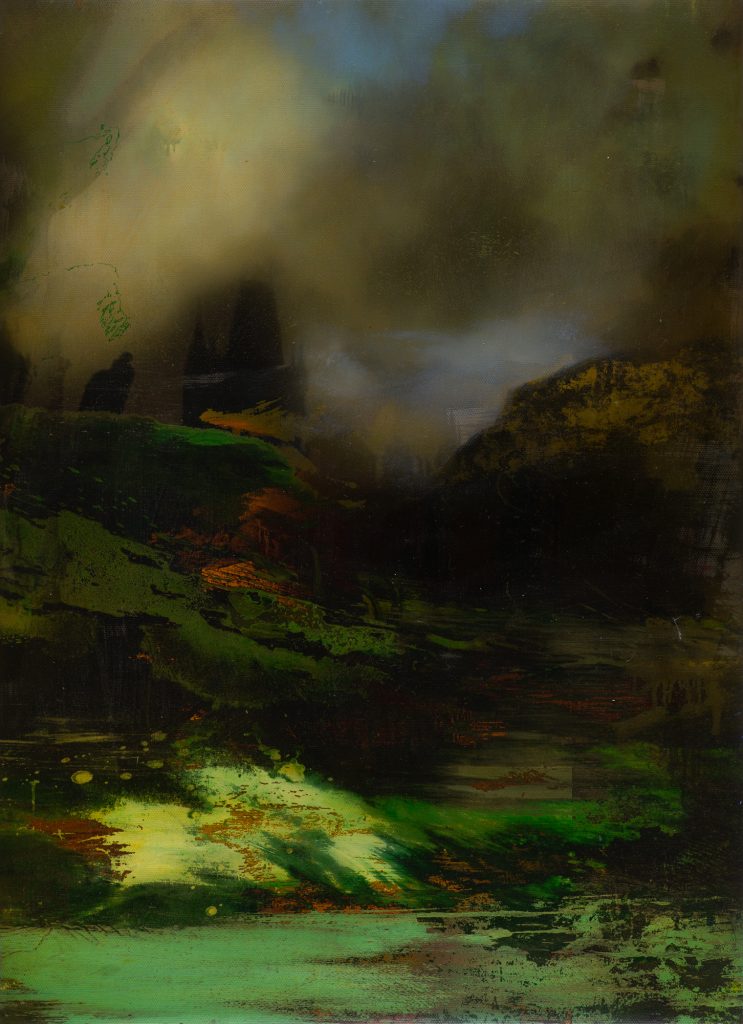
Alan Rankle born in 1952 is an artist and curator whose work explores historical, social and environmental issues informed by his interest in the evolution of landscape art.
Since his first exhibition at the Institute of Contemporary Arts London in 1973 while still a student at Goldsmiths College, he has worked variously in painting, video, photography, printmaking, architectural intervention and curating, through a series of international exhibitions and commissions.
Retrospective surveys of his work have been presented at Gallery Oldham in 2006 and Fondazione Stelline, Milan in 2010.
Recent projects include curating the exhibition Axis: London Milano for Fabbrica del Vapore in Milan with Claudia De Grandi and a prize-winning immersive installation Riverside Suites at the Lowry Hotel, Manchester in collaboration with the designer Veronica Givone and AFK Architects.
His work was featured in the 2017 Southampton City Art Gallery exhibition and book, Capture the Castle showing landscape artists from Turner to the present day.
2018 saw the presentation of two major commissions Not Dark Yet for the Grand Hotel in Nuremberg and Prague Suite for Intercontinental in Prague in collaboration with Westmont and P78 Editions.
In November 2019 a museum survey exhibition The Romantics opening at St. Barbe Museum & Art Gallery features a major large scale work by Alan Rankle alongside paintings by Julian Opie, George Shaw, Peter Archer, Graham Arnold, Jeffery Camp, David Inshaw, and Christopher Le Brun PRA, among others.
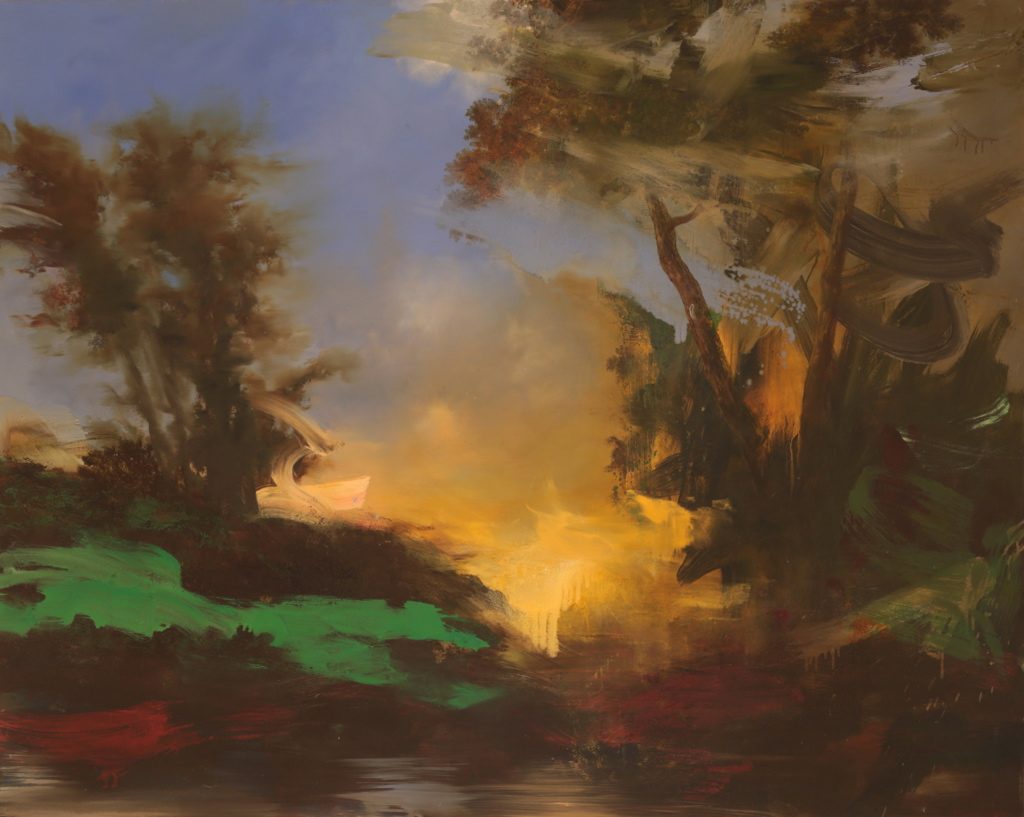
Alan Rankle works are featured in museum, corporate and private collections worldwide including: Southampton City Art Gallery; Hastings Museum & Art Gallery; Gallery Oldham, Manchester; Bankside Museum, Halifax; The Atkinson Museum; Southport; Museé de Montsegur, France; Fondazione Stelline, Milan; Collezione Vento, Milan; Blackburn Museum & Art Gallery; Stellar Art Foundation, London; Bain Capital, London; PriceWaterhouseCoopers’ London; Marriott Opera, Paris; Touchstones Rochdale Art Gallery & Museum; Novo Nordisk, Copenhagen; and The House of St. Barnabas Collection, London.
He is represented by Federico Rui Arte Contemporanea, Milan; Michaela Helfrich Galerie, Berlin; Maerz Contemporary, Molde; Dominic Weston Smith Art Management, London and P78 Editions, St. Leonards on Sea.
Alan Rankle Studio Projects enquiries to Claudia Arnold Ziegeler cazberlin@gmail.com
